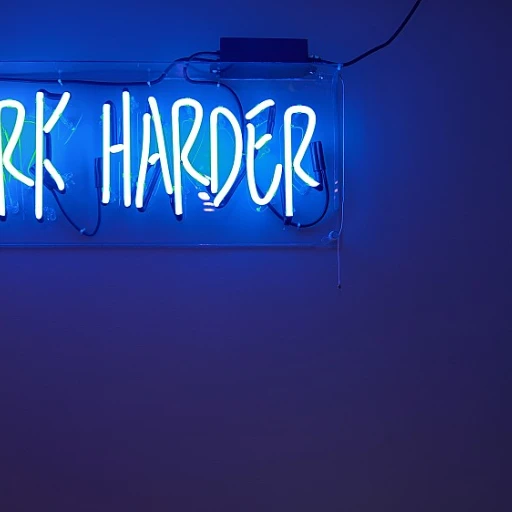The Rise of Work Tech in Performance Tracking
Emergence of Advanced Solutions
In recent years, the business landscape has witnessed a notable shift towards the integration of technology solutions aimed at enhancing employee performance. This surge in innovation is largely attributed to the growing recognition of technology’s critical role in optimizing workplace productivity and efficiency. As more organizations embrace digital transformation, there has been an increasing demand for sophisticated tools capable of monitoring, assessing, and improving workforce performance. As highlighted in the subsequent parts of this article, these tools form the backbone of effective employee monitoring, paving the way for real-time insights into performance management. The proliferation of work-tech solutions stems from a need for more precise, data-driven decision-making processes in the corporate world. Companies are realizing that relying on traditional methods of performance assessment may not be sufficient in a fast-paced, competitive environment. Instead, incorporating advanced technology allows for accurate tracking of key performance indicators (KPIs), ultimately enabling organizations to tailor their strategies to bolster productivity and employee engagement. As we explore further, it’s clear that this technological advancement is not just a trend, but a fundamental change in how businesses operate. Real-time data capabilities, for instance, are revolutionizing performance management by providing immediate feedback and insights, as we will discuss in future sections. Furthermore, best practices for implementing these technologies are continually evolving, ensuring that businesses stay ahead of the curve. This evolution in work tech is not merely about adopting new tools; it's about creating an ecosystem where continuous improvement is part of the organizational culture. Providing constructive feedback becomes integral to this process, fostering a culture of growth and development within the workforce. As evidenced by success stories from leading companies, embracing these changes can lead to significant performance enhancements and drive your business towards sustained success.Tools and Software: The Backbone of Employee Monitoring
Essential Monitoring Tools for Maximum Efficiency
As we delve into the dynamic world of work technology for performance tracking, it's essential to recognize the pivotal tools and software that form the backbone of employee monitoring. These technological marvels have evolved from simple tracking mechanisms into complex systems capable of providing meaningful insights into employee performance. To drive enhanced productivity and staff management, organizations are leveraging a variety of innovative tools. One such tool is employee monitoring software, which enables managers to monitor attendance, track project progress, and pinpoint productivity trends. It fortifies the foundation of performance tracking by offering visibility into daily work patterns and helps identify areas where resources or support may be required for improvement. Performance management platforms are another core element. These systems provide real-time feedback and facilitate seamless communication between employees and their managers. By aligning individual goals with organizational objectives, these platforms ensure everyone is moving towards common targets, fostering a culture of continuous improvement. Moreover, the integration of artificial intelligence and machine learning into these platforms has revolutionized data analysis, presenting key performance indicators with unprecedented accuracy and efficiency. This tech stack helps in recognizing both immediate actions needed and long-term strategic planning, essential components discussed further in our exploration of real-time data. Lastly, the transition to cloud-based software has unlocked new levels of accessibility and collaboration, allowing teams to work efficiently across different time zones and locations. The myriad of options available makes it crucial for businesses to carefully select tools that align with their unique demands and organizational goals. These decisions are pivotal when implementing performance management solutions, a topic we will explore further in the subsequent sections. Harnessing these advanced tools not only streamlines operational processes but also empowers teams to reach their full potential, positioning companies at the forefront of their industries as evidenced by several success stories in our coverage of leading companies.Real-Time Data: The Game Changer in Performance Management
The Transformative Power of Real-Time Data
In the realm of performance management, real-time data has emerged as an invaluable asset, reshaping the way companies understand and enhance employee performance. With modern work tech, businesses can delve into performance metrics as they happen, providing immediate insights into how teams and individuals are functioning. This immediacy allows for swift, data-driven decisions, increasing agility and responsiveness.Real-time data enables a proactive approach to performance challenges. Instead of waiting for quarterly or annual reviews, managers can address issues as they arise, fostering an environment where continuous improvement is part of the daily work culture. The data offers a detailed view of productivity patterns and can highlight areas needing attention or development well before they become critical problems.
Moreover, this immediacy in data collection and analysis contributes heavily to enhancing the feedback loop, a theme further explored with regard to human resources. Through instantaneous insights, managers can tailor their feedback specific to current performances, making it relevant and effective. This alignment of real-time data with immediate feedback loops closes the gap between performance assessment and performance improvement.
The role of real-time data is further amplified by advanced tools and software designed specifically for tracking and analyzing these metrics. These digital solutions form the backbone of employee monitoring systems, seamlessly integrating with other corporate systems to deliver precise and actionable insights. This symbiotic relationship between data and technology underscores a trend that more companies are implementing successfully, as evidenced by numerous case studies displaying impressive improvements post-adoption.
In summary, leveraging real-time data is a game changer for organizations striving for superior performance management. By embracing this approach, companies stand to benefit from enhanced productivity, engagement, and overall performance, setting new benchmarks in their respective industries.





